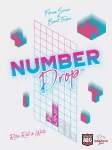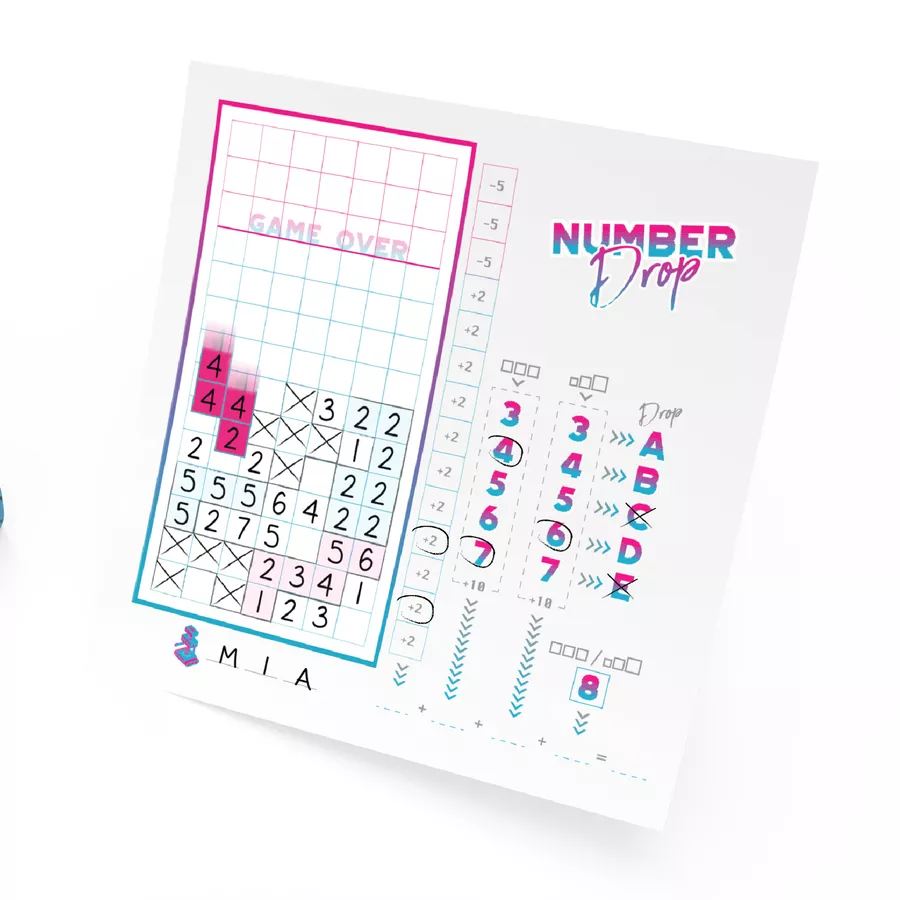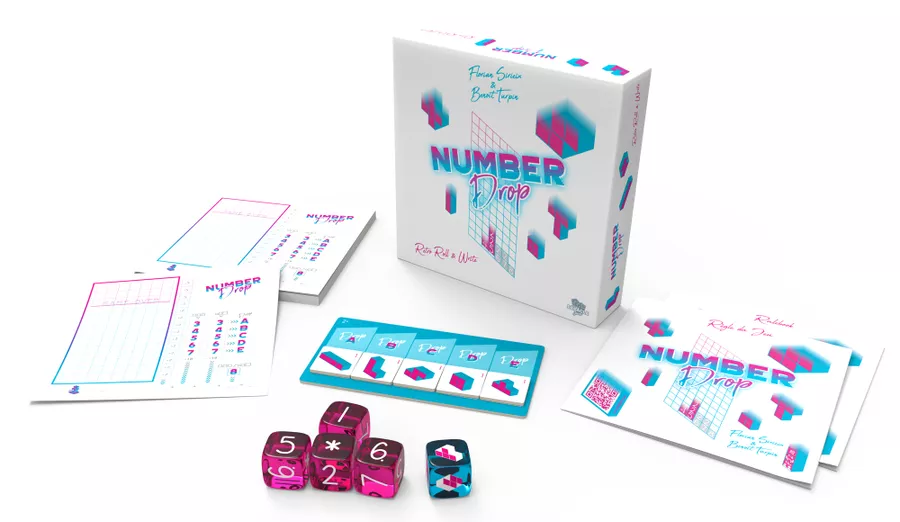Unplugged: Number Drop
 In the past few years, the boardgame world has seen a huge number of Roll and Write games where dice are rolled (or cards drawn) and then players simultaneously use the results to check off boxes or fill in a paper handout to score points. Number Drop has players filling in a sheet of paper Tetris-style with the pieces made of numbers. Place numbers adjacent to each other in sets or sequences to score points. The game ends and scores are tallied when one player “overflows” their game board.
In the past few years, the boardgame world has seen a huge number of Roll and Write games where dice are rolled (or cards drawn) and then players simultaneously use the results to check off boxes or fill in a paper handout to score points. Number Drop has players filling in a sheet of paper Tetris-style with the pieces made of numbers. Place numbers adjacent to each other in sets or sequences to score points. The game ends and scores are tallied when one player “overflows” their game board.
Number Drop
Publisher: AEG
Ages: 10+
Players: 1-6
Time: 20 minutes
(Review copy provided by publisher)

While the publisher would never say it, it is hard not to describe Number Drop as a Tetris-like game where the tiles are made of numbers, and players try to arrange the pieces to create adjacent sets of numbers or straights. The “active” player (it really doesn’t matter who) will take five dice and roll them. Four of them simply display numbers (1 to 7 as well as two asterisks used as wildcards) while a fifth displays five different shapes (and another asterisk.) Once the dice are rolled and the shape is revealed, each player must fill in the shape with numbers (however you wish) and then fit the shape (you can rotate and flip it) onto your game board by filling in the appropriate number-full shape. To place it on your board you need to pretend it is “falling” from the top of the board until it hits a filled square, you can’t fill in an empty space below or pretend the shape spins as it falls.

Again, players are attempting to get adjacent groups of the same number or adjacent groups of runs (like 2,3,4,5…) When a player gets a set of numbers, five of a kind for example, they circle those numbers on their board and circle the “five of a kind” space on the side of their scorecard. This means they won’t get any benefit from a “five of a kind” for the rest of the game (you could circle the “4 of a kind” if uncircled or try to get a 6th one adjacent later.
You can only circle one set each turn (so you couldn’t do a set of 4 and a sequence of 5 on the same turn.) However, if you manage to be the first to circle BOTH sets of a given length (like 4 of a kind and a run of 4) you are able to “drop” a blocking shape onto all the other players. All other players must add the block listed on the “drop card” for that set to their card. This block has no numbers on it, just X’s, so it is quite a pain to add to one’s board.
The game continues until one player can no longer add shapes to their board without going above the top line. Scores are then tallied. Players get +2 points for completely filling in a row (X’s count) and -5 points for any rows that appear above the top of their play area. Each combo earns points for its length. Thus, a 7 of a kind combo would be worth 7 points or a straight of five numbers worth 5 points. (You can earn points from both types – so score 5 points for a 5 of a kind and a 5 straight.) All points are tabulated and the winner is the player with the most points, surprise!
Verdict:
I have many, many roll and write games. Number Drop stands out from the crowd due to its simple rules that give rise to complex decisions. It is easy to play but harder to play well. Some roll and write games lack player interaction and are often disparagingly referred to as multiplayer solitaire games. While Number Drop does limit player interactions, the presence of those blocking shapes gives players something to race for (and cackle in glee when “giving” them to other players.) Overall, I consider it a solid game when played casually with gamers or non-gamers. The one caveat is the danger of a player freezing up when considering all the many options (which numbers go where in the shape, where to put the shape, etc…) In boardgame circles it is called “AP – analysis paralysis. Number Drop is not kind to those who can fall into the AP trap, drawing out what should be a short game. If played more casually and quickly, it’s a great little 20 minute experience.
Kid Factor: Most roll and write games are very accessible. The rules to Number Drop are simple and even quite a young person can play along with the game. There is some strategy in planning ahead with tile placement and when to grab which scores, but even a younger kid should be able to score some points while older players might be scoring higher. As the game is simultaneous and player interactions are very indirect, the game avoids any issues where one less-experienced player might interfere with the gameplay of the more experienced players. I could even see giving younger players a handicap like giving them immunity to the bad block tiles.





Discussion Area - Leave a Comment